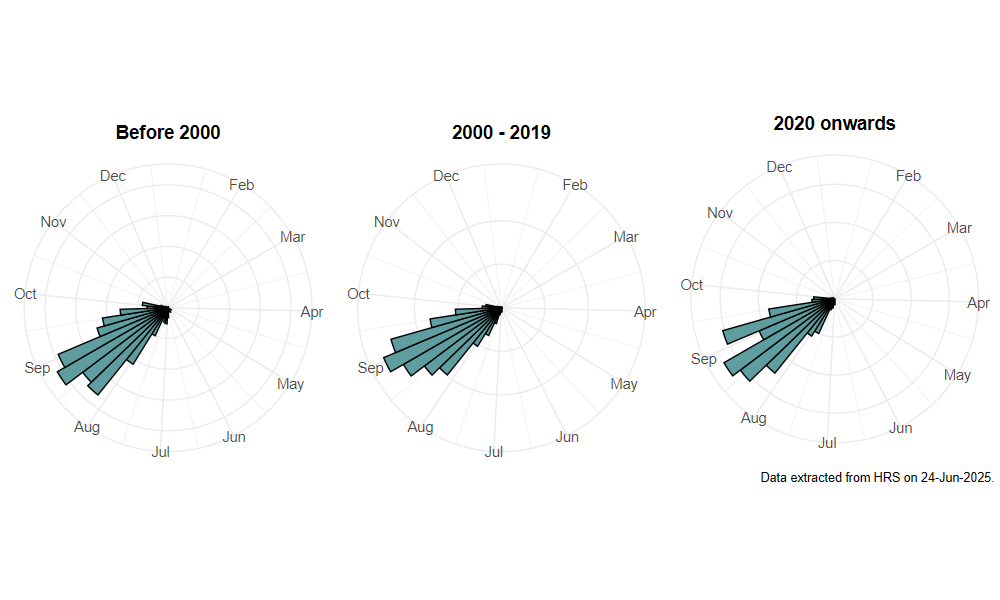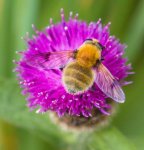Sericomyia superbiens (Müller, 1776)
Identification
Identification difficulty = 1. ![]()
![]() according to Ball & Morris, 20241
according to Ball & Morris, 20241
Synonymy
Arctophila fulva (Harris, 1780) in Stubbs & Falk (1983)2, A. mussitans (Fabricius, 1775). Arctophila superbiens in Stubbs & Falk (2002)3.
Biology
The larva remains undescribed, but is thought to be aquatic or semi-aquatic. Stubbs & Falk (1983)2 report an observation of a female ovipositing in a water filled hoof print in a shaded muddy path beside a stream. Found near springs, wet flushes or streams, usually near the edge of woodland or carr. Adults are commonest in late summer and visit purple flowers, especially Devil's-bit Scabious Succisa, white umbels and yellow composites.
Flight period
The following plots show the number of unique records per week excluding those reported to be of immature stages.

Distribution
This is primarily a northern and western species but there is an outlying population in East Anglia, especially Norfolk where it is part of an assemblage of otherwise northerly species.

Trends
The following plots show the Frescalo TFactor vs year and a map of the rescaled frequency (all records) for the species.
-
Ball, S., & Morris, R. (2024). Hoverflies of Britain and Ireland. WILDGuides (3rd ed.). Oxford: Princeton University Press. ↩
-
Stubbs, A., & Falk, S. (1983). British Hoverflies: An Illustrated Identification Guide (1st ed.). Reading: BENHS. ↩ ↩
-
Stubbs, A., & Falk, S. (2002). British Hoverflies An Illustrated Identification Guide (2nd ed.). Reading: BENHS. ↩
